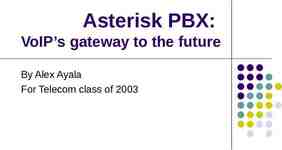Local Health Department Cost Report and Settlement By: Steven
17 Slides6.33 MB
Local Health Department Cost Report and Settlement By: Steven W. Garner
Medicaid Regulations CMS Provider Reimbursement Manual 15-1 2300. Principle: “Providers receiving payment on the basis of reimbursable cost must provide adequate cost data based on financial and statistical records which can be verified by qualified auditors.”
Medicaid Regulations Continued State Plan Amendment (SPA) Attachment 4.19-B Section 9 states: “To assure payments do not exceed the upper payment limits set forth at 42 CFR447.321, Health Department services reimbursed under a fee schedule and furnished to Medicaid recipients will be cost settled annually to Medicaid allowable cost.
4 Primary areas of cost reporting A A Financials B B C C D D Actual Time Reports Statistical Reports 7 Step Cost Settlement Process
A. Cost Reporting Financials Your General Ledger must reflect cost assigned appropriately to the program where expensed.
A. Cost Reporting Financials Cont. Standard Chart of Accounts – Categorize Cost Account 4A is Administrative Cost - Health Director/Administrative Staff All 4A cost are General Admin. cost allocated to all cost categories - Medical Director Account 4B is Clinical Administrative Cost - Nursing Director/Supervisors and Lead Nurses All 4B cost are allocated to clinical cost activity only - Pharmacists, Interpreters, Clinical Billing Staff Account 4C is Clinical Cost - - Family Planning, Maternal Health, Child Health, - - Dental, Immunizations, TB, STD, Communicable Disease Account 4D is Non Reimbursable Cost 4C cost include all Clinical Direct Service Activity cost 4D cost are removed from your claimable cost - Environmental Health, CC4C, OBCM, Home Health, Bioterrorism, - WIC, Health Promotion, Animal Control, other Grant program activity
A. Cost Reporting Financials Cont. 1. Personnel Report – Assigning Staff All Staff that are employed by the Health Department and reports to the Health Director must be included on the Personnel Report Each Employee is assigned to a cost pool category as approved by CMS The Personnel Report must balance back to the Salary and Fringe Reported on the General Ledger
A. Cost Report Financials Cont. Human Service Model 1. Most appropriate cost application: Identify all staff and program cost under Human Service Model. This includes: Health Activity DSS Activity Other Department Activity 2. Impact of Human Services Model Admin Allocation Cost Report allocates administrative cost base on a full cost methodology. CMS does not allow administrative cost allocation based on FTE for cost report purposes. Health Departments should allocate base on their selected methodology.
B. Actual Time Reporting Process Staff that completes a time report: 1. 100% of time must be reported on the time report. 2. 100% of time must balance back to county time sheet. 3. Nursing Director/Supervisors and Lead nurses must be excluded from the actual time report.
Actual Time Reporting Process Which Employees Participate in the actual time report Nurses: Include Nurses Social Workers: workers that may and Nursing Do not include Nurse Director or Nurse Supervisors. Health Education and Nutrition perform any type of Assistant Position. Looking for social Educators and clinical activity. Nutritionists that 100% CC4C and perform clinical PCM may be excluded and reported to 510 if no clinical allocation. Looking for Health service activity. WIC should be excluded and reported to 510.
C. Statistical Reporting Time Frame for Reporting/Billing Services According to the new State Plan Amendment (SPA), Interim Cost Reports are to be submitted to Medicaid 8 months after the close of the fiscal year. Medicaid has 12 months after your cost report is filed to review the report and prepare a final cost report. LHD’s have 12 months to bill claim and 18 months to rebill denied claims. It is important to stay on top of your billing and make sure all claims are submitted in a timely manner to avoid lag claims being excluded from your settlement.
C. Statistical Reporting Cont. How Billing and Funding can affect Settlement Claims not entered prior to submitting your interim cost report will result in the following: Inappropriate calculation of your Medicaid statistic. (Claims excluded from the cost report could potentially overstate Medicaid cost.) Inappropriate offset of Medicaid payments. (Adding additional payment after filling the interim settlement would result in a payback at time of final settlement calculation.)
C. Statistical Reporting Cont. Medicaid Population Statistic Required by DMA Adjudicated Medicaid Charges (Numerator) Total Charges (Denominator) Medicaid Statistic In order to improve the Medicaid statistic, the following reportable only service types will be identified and excluded from the Total Charges (Denominator): Codes associated with OB Package code Codes associated with Health Check Package codes State Supplied Vaccines
C. Statistical Reporting Cont. Medicaid Eligible Not Paid Report One of the largest negative impacts to cost settlement funds include services provided to patients eligible to receive Medicaid benefits on the date the service was rendered but not paid by Medicaid. The impact of these type of services include: 1. You receive no fee for service funding for these claims. 2. The charges for these services are considered part of the non Medicaid population and therefore reduce the percentage of Medicaid cost that could be settled. As part of the cost reporting process beginning with SFY 2015, a report will be available for each LHD to identify those claims that could potentially be paid by Medicaid but have not been adjudicated through the Medicaid MMIS system.
C. Statistical Reporting Cont. Determining a Charge Schedule Our goal is to also assist local health departments in determining a fee schedule based on actual cost. It is our intention to add a charge schedule report to the list of standard cost reports. Base on a Relative Value Unit Methodology, actual cost will be assigned to each service as a rate or fee per service. Total cost will only be assigned to covered defined services.
The 7 Step Cost Settlement Process Step 1: The Medicaid population from a charge based methodology is applied to total clinical cost to identify total allowable Medicaid cost. Step 2: A second charge based methodology is used to distinguish Medicaid allowable cost between Family Planning and Non Family Planning. Step 3: All Medicaid payments are applied as an offset to total clinical cost. Step 4: The difference between your total clinical cost and payment offset is your settlement. Step 5: The Federal Funds Participation Rate (FFP) is applied. Family Planning receives 90% and currently Non Family Planning is approximately 65%. Non Family Planning rate changes yearly. Step 6: Health Departments are paid the FFP share of the settlement. DMA withholds 10% from the interim payment. Step 7: DMA performs a desk audit and prepares a final settlement within 12 months from the filed interim cost report. The result will be paid to or collected from the health department.
Thank You! Steven W. Garner 919-909-4625 [email protected]






















